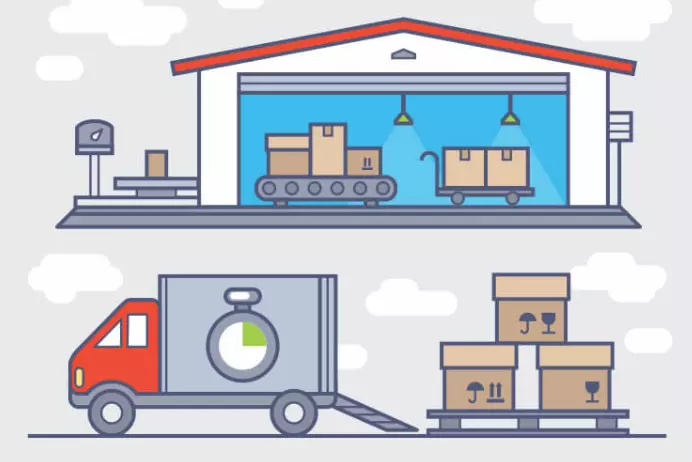8 Steps to Measure and Improve Chinadivision Warehouse Efficiency
Improving warehouse efficiency is crucial for optimizing operations and reducing costs. Here's a comprehensive eight-step guide to measuring and improving warehouse efficiency in a Chinadivision warehouse or any similar setting:
Step 1: Define Key Performance Indicators (KPIs)
Good warehouse efficiency is not only about putting all items in place and taking out products on time, but also about maximizing productivity while saving time and money. Tools like barcodes, scanners, etc. that can efficiently confirm commodity SKU information will be in the warehouse process Improve warehouse efficiency.
What are warehouse key performance indicators?
Order fulfillment service providers who want to build a high-performance warehouse need to divide the key indicators of the warehouse into the following parts:
Warehouse Receiving Key Performance Indicators: It is used to examine the efficiency of your warehouse receiving incoming goods and the transportation of goods from the receiving station to other parts of the warehouse. On the receiving side, if there is a problem, it will have an impact on the storage and picking process.
Inbound KPI: Inbound process is the process of getting products and putting them into the corresponding area in the warehouse. Having an efficient inbound process can allow you to place items for sale faster or increase manufacturing speed.
Inventory KPI: Inventory management can have a major impact on your customer satisfaction because if you don't have stock or product in an easy-to-reach location, you may not be able to fulfill orders. So make sure you keep your stock under control for pickers to pick cost and efficiency.
Fulfillment KPIs: The key indicators for optimizing the efficiency of the fulfillment process are reducing shipping and overall costs, shortening lead times, and increasing business attractiveness through improved profitability.

Step 2: Conduct a Current State Assessment
Gather data on the current warehouse processes, layout, and operations. Analyze historical performance to understand bottlenecks, peak demand periods, and areas of improvement. Use this data to create a baseline for measuring improvements.
Step 3: Optimize Warehouse Layout
Review the warehouse layout to ensure it's conducive to efficient operations. Consider factors like product flow, proximity of high-demand items, and placement of equipment. Optimize storage locations to reduce travel time for workers during order picking.
Simplify the warehouse order fulfillment process:
Use automation to sort and prioritize orders based on urgency.
Use barcode scanning or RFID technology to locate items.
Use appropriate packaging materials to prevent damage.
Provide customers with tracking information.
Step 4: Implement Warehouse Management System (WMS)
Introduce or upgrade the WMS to automate and optimize various warehouse processes. A WMS can streamline inventory management, order processing, and tracking, leading to improved accuracy and reduced lead times. Not only that, the wms system also gives customers the ability to track orders.
Chinadivision has its own WMS management system, which can synchronize the order information of major e-commerce platforms, quickly synchronize and realize fulfillment services, and continuously optimize in shortening logistics transportation time and improving user experience.
Step 5: Train and Empower Staff
Invest in comprehensive training programs for warehouse staff. Well-trained employees are more efficient and contribute to higher accuracy in picking, packing, and shipping processes. Empower them to suggest process improvements based on their insights and daily experiences.
Step 6: Implement Lean Principles
Apply lean principles such as 5S (Sort, Set in order, Shine, Standardize, Sustain) to eliminate waste, improve organization, and maintain a clean and efficient workspace. Implementing visual management techniques can also enhance productivity.
Step 7: Continuous Monitoring and Improvement
Regularly monitor KPIs and gather feedback from staff to identify ongoing areas for improvement. Implement a continuous improvement cycle, such as Plan-Do-Check-Act (PDCA), to make incremental enhancements to processes, technology, and workflows.
Step 8: Embrace Technology and Automation
Leverage technology and automation solutions to further enhance efficiency. Consider options like barcode scanning, RFID tagging, autonomous guided vehicles (AGVs), and robotics for repetitive tasks. Automation can reduce errors, speed up processes, and increase overall throughput.
The key to successful warehouse efficiency improvement is a combination of data-driven decision-making, employee engagement, process optimization, and technological innovation.





